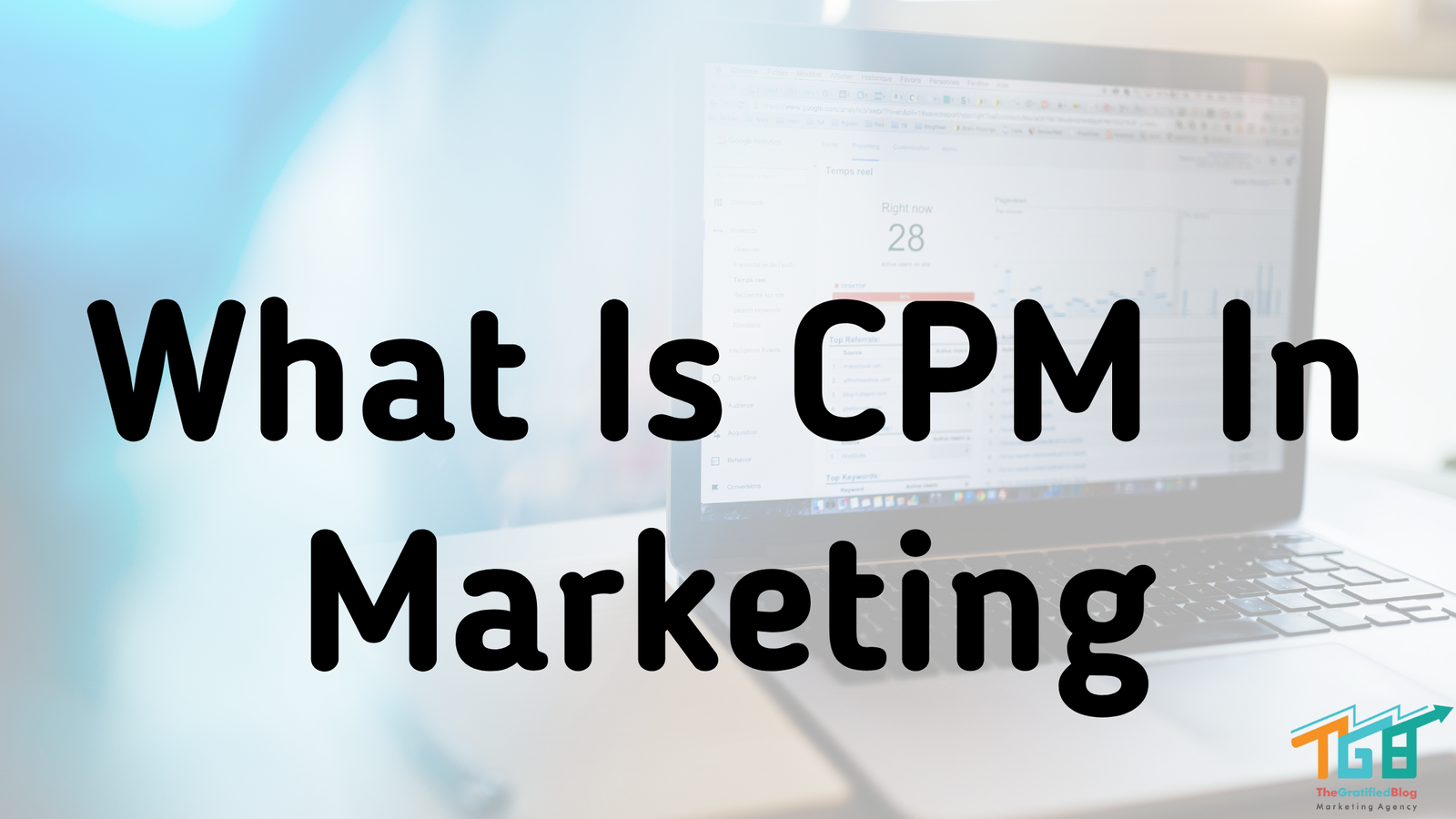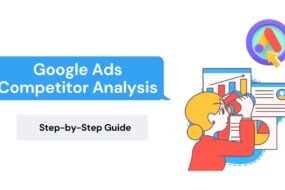
“What is CPM in marketing?” is a fundamental question in navigating the dynamic landscape of marketing. A profound comprehension of diverse strategies and metrics is crucial for success in this ever-evolving field. Among these metrics, one that plays a pivotal role in assessing campaign effectiveness is CPM, or Cost Per Mille. CPM, where “mille” denotes one thousand in Latin, stands for Cost Per Thousand. Understanding the essence of CPM in Marketing empowers professionals to adeptly scrutinize advertising costs and refine their strategies for superior outcomes.
In this article, we will delve into the concept of CPM, exploring its functionality, relevance, and how it fits into broader digital marketing strategies. By understanding CPM comprehensively, you can unlock valuable insights to optimize your marketing endeavors and achieve tremendous campaign success.
So, let’s begin.
What Is CPM In Marketing?
CPM, or Cost Per Mille, is a metric used in marketing to determine the cost incurred for every thousand impressions or views of an advertisement. The term “mille” is derived from Latin and signifies one thousand.
CPM provides marketers with valuable insights into the expense required to reach a specific audience size. It is commonly used in various advertising channels, comprising conventional media like television, radio, and digital platforms. By understanding CPM, marketers can evaluate the cost-effectiveness of their campaigns, compare different advertising channels, and make informed decisions to optimize their marketing tactics.
For example, if you wanted to run a CPM campaign on a website with 100,000 page views per month, it would cost you $100 to have your ad seen by 1000 people. You must budget $10,000 to get 100,000 page views a month.
Advantages Of CPM Advertising
There are several advantages of CPM advertising,
- Broad Reach: CPM campaigns allow you to effectively reach a large audience as they are often run on high-traffic websites or blogs.
- Lower Advertising Rates: The cost structure of CPM is favorable as you only pay for impressions, not clicks or other interactions, resulting in lower advertising costs.
- Targeted Audience: CPM campaigns offer the flexibility to target specific audiences by choosing the placement of your ads. For instance, you can focus on popular websites or blogs in a particular country or region.
- Customization Options: CPM campaigns can be tailored to meet your specific needs. You can decide the duration and days of the week for your ads to appear.
- Measurable Results: With CPM, you can track the number of impressions and the duration users view your ads. This allows you to measure the success of your campaign accurately.
- Adjustability: If your CPM campaign is not achieving the desired outcomes, you can change your ad creative or target a different audience.
Disadvantages Of CPM Advertising
There are also several disadvantages of CPM advertising,
- Result Tracking Complexity: Tracking the results of a CPM campaign can be challenging since you are not charged based on clicks or other specific actions. It requires careful monitoring and analysis to gauge the effectiveness of the campaign.
- Limited Visibility with Low-Traffic Placements: Your ad needs to be placed in a high-traffic area to receive sufficient visibility, potentially reducing the number of people who see it.
- Cost Considerations for Large Audiences: CPM campaigns can become costly when targeting a large audience. The expenses can escalate, primarily if the campaign aims to reach a significant number of impressions or views.
- Impact of Poorly Designed Ads: The effectiveness of a CPM campaign heavily relies on the quality and design of the ad. The ad must capture attention and convey the intended message effectively to deliver the desired results.
How Does CPM Work In Marketing?

CPM, or Cost Per Mille, functions as a pricing model in marketing that determines the cost an advertiser pays for every set of one thousand impressions or views of their advertisement. The CPM calculation involves dividing the total cost of the advertising campaign by the number of impressions generated and then multiplying it by 1,000.
In practical terms, CPM allows advertisers to set a predetermined budget and bid for ad placements based on the desired number of impressions. Advertisers typically negotiate with publishers or platforms to secure ad space at a specific CPM rate. When the ad is displayed and generates impressions, the advertiser pays the agreed-upon CPM rate for every thousand impressions delivered.
How To Create A Successful CPM Campaign?
If you are interested in using CPM to advertise your business, there are a few things you need to do to create a successful campaign.
- Choose the right website or blog to place your ad. Which means you need to find a site with much traffic.
- It would help create a well-designed ad relevant to the website or blog.
- It would be best if you chose the right keywords to target.
- You need to set a budget and stick to it.
- You need to measure the results of your campaign and make changes if necessary.
- It would help if you were patient. CPM campaigns can take time to generate results.
- You must be prepared to adjust your campaign if it needs to be fixed.
Following these tips ensures that your CPM campaigns are efficient and generate the best ROI.
Want To Get Started With CPM Marketing?
If you want to use CPM marketing to reach your target audience, keep a few things in mind.
- First, you need to identify your target audience and what they are most likely to respond to.
- Second, you need to create an advertising or marketing campaign that is designed to reach a large number of people.
- Finally, it would help if you used other marketing strategies, such as PPC or SEO, to guarantee that your advertisement reaches its intended audience and achieves the desired results.
How Does CPM Relatively Close To Digital Marketing?

Contact a digital marketing agency today if you want help starting CPM marketing. They can aid you in crafting a prosperous marketing campaign designed to engage with your target audience and attain the intended outcomes.
CPM can be a valuable tool for reaching many people. However, it is essential to remember that only some people who see your ad will take action. For this reason, CPM is often used with alternative digital marketing strategies, including PPC or SEO, to guarantee that your advertisement reaches its intended audience and achieves the desired results.
Digital marketing agencies support your online presence, including SEO, PPC, social media, and email marketing. Contact a digital marketing agency today to explore how they can contribute to the online growth of your business.
Conclusion
This blog post has helped you understand CPM in marketing. Remember the valuable tips we’ve shared as you consider utilizing this strategy to connect with your target audience.
Applying these insights enables you to leverage CPM and optimize your marketing efforts to achieve desired outcomes.
If you still need help understanding this, feel free to contact us. We will be happy to help you.
Thanks for reading









 By TheGratifiedBlog
By TheGratifiedBlog
One reply on “Discover: What Is CPM In Marketing?”
Great post on CPM in marketing! Here are a few actionable tips to help you effectively utilize CPM in your marketing efforts:
Know your target audience: Make sure you understand your target audience, their needs, and what they’re looking for. This will help you create targeted and effective campaigns that resonate with them.
Choose the right platforms: Select platforms that are relevant to your target audience and offer a high CPM for your specific niche. This will help you reach your target audience more effectively and maximize your return on investment.
Utilize data: Use data to inform your campaigns and target your audience more effectively. This will help you make informed decisions about where to allocate your marketing budget and improve your results.
Test and refine: Continuously test and refine your campaigns to optimize your results. This will help you identify what’s working and make data-driven decisions to improve your campaigns over time.
Monitor your results: Regularly monitor your CPM and other key metrics, such as click-through rates and conversions, to see the impact of your campaigns and make informed decisions about your marketing budget.
Hope these tips help you effectively utilize CPM in your marketing efforts! Good luck!